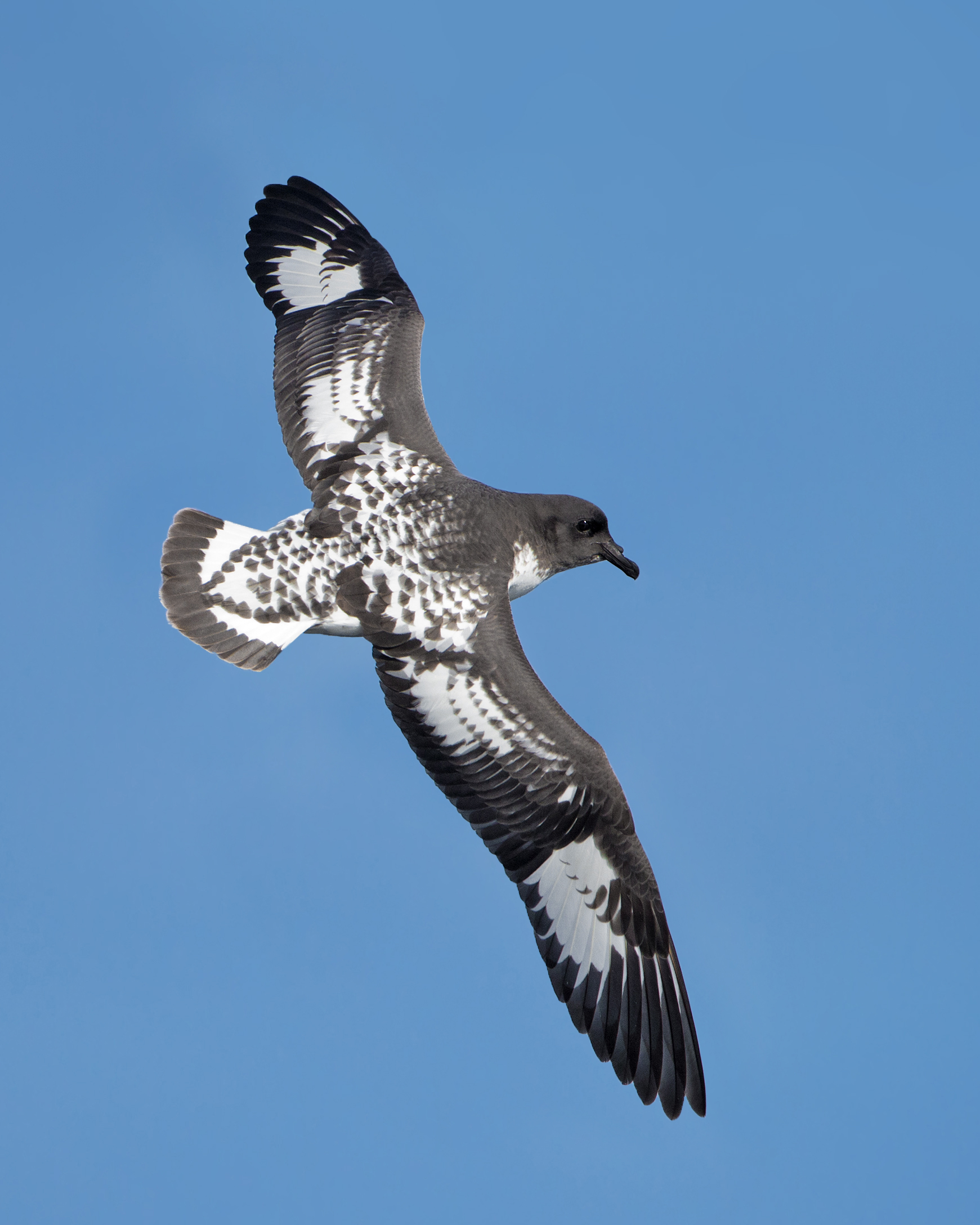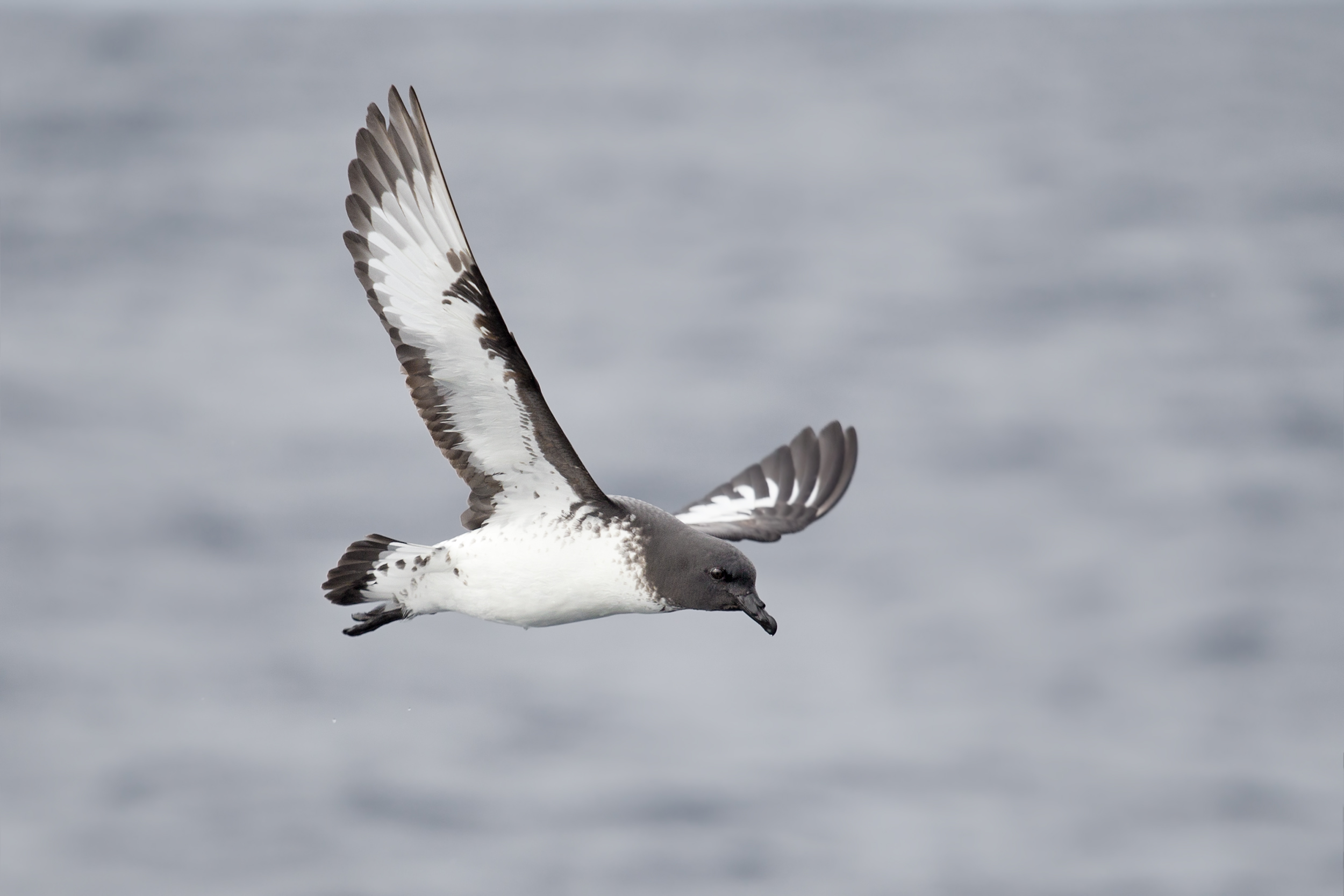Cape petrel
The Cape petrel (Daption capense), also called the Cape pigeon, or Cape fulmar, is a common seabird of the Southern Ocean from the family Procellariidae. It is the only member of the genus Daption, and is allied to the fulmarine petrels, and the giant petrels. They are extremely common seabirds with an estimated population of around 2 million.
Taxonomy
The Cape petrel is the only known member of the genus Daption and is in turn a member of the family Procellariidae and order Procellariiformes. There appears to be a subgroup within the family consisting of the Southern giant petrels, the members of Fulmarus, the Antarctic petrel, and the snow petrel.
Daption is derived from Ancient Greek for "little devourer", and the Cape name is because of where the type specimen was collected. Finally, pintado is Spanish for "painted" for its plumage. One of their other names, Cape pigeon, is from their habit of pecking at the water for food. The word petrel is derived from St. Peter and the story of his walking on water. This is in reference to the petrel's habit of appearing to run on the water to take off.
Description
The Cape petrel is a unique looking petrel. It has a black head and neck, and a white belly, breast, and its underwing is white with a black border. Its back, and upperwings are black and white speckled, as is its tail which also has a band of black. When fully grown, their wings span 86 cm (34 in) and they are 39 cm (15 in) long.
Behavior
Diet
The Cape petrels' diet is 80% crustaceans, as well as fish and squid. Krill is their favorite crustacean, which they obtain by surface seizing as well as diving under water and filtering them out. They are also well known for following ships and eating edible waste and carcasses thrown overboard. They are aggressive while feeding and will spit their stomach oil at competitors, even their own species.
Breeding
They are colonial birds, and nest on cliffs or level ground within a kilometer of the ocean. They tend to have smaller colonies than other petrels. Their nests are formed with pebbles and are placed under overhanging rock for protection, or in a crevice. In November they lay a single clear white egg, which is incubated for 45 days by both sexes. Like most other fulmars, they will defend their nest by spitting stomach oil. Skuas in particular will prey on Cape petrel eggs and chicks. Upon hatching, the chick is brooded for ten days until it can thermoregulate, after which both parents assist in the feeding.
The chicks fledge after 45 more days, around March.
Range and habitat
During breeding season, Cape petrels feed around Antarctica's shelf and during the winter they range further north, as far as Angola and the Galapagos Islands. They breed on many islands of Antarctica and the subantarctic islands, some going as far as the Auckland Islands, the Chatham Islands, Campbell Island. Their main breeding grounds were on the Antarctic Peninsula, South Georgia, the Balleny Islands, the Kerguelen Islands, as well as islands in the Scotia Sea.

